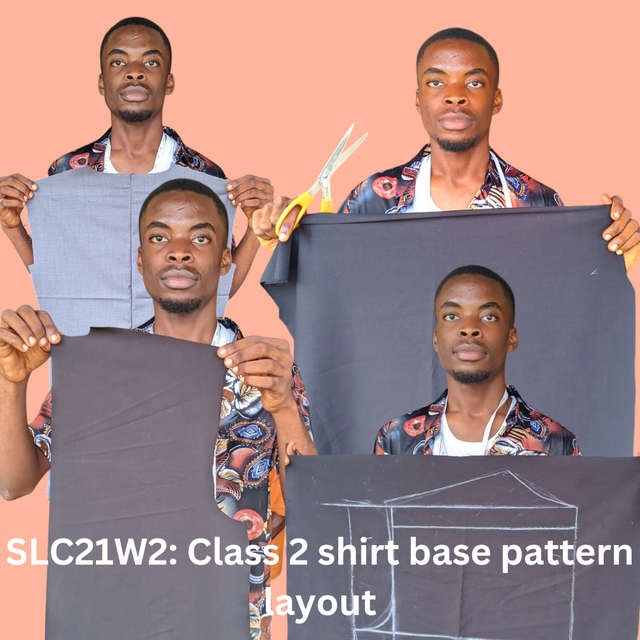
It's another week to learn something new and this week focused on the back base pattern of men's shirts. Having known the measurements, it's easier to make a pattern on the back pattern before making the collar, front base, sleeves, and cuff if long sleeves.
Focusing on the back base pattern required some measurements for personal sizes. So I had to use the measurements I took of my client since I'm working on his shirt. The measurements I took of him included;
| Back width | 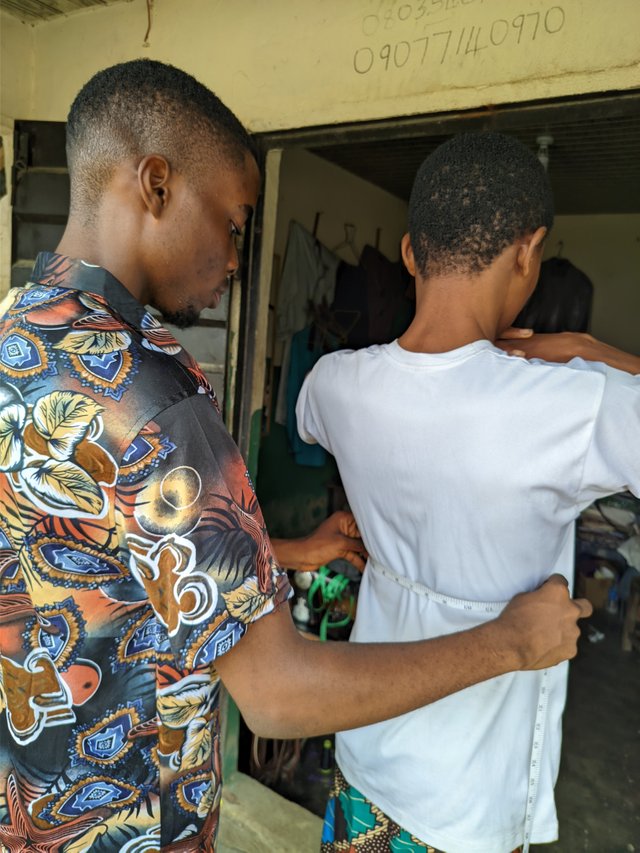 |
|---|---|
| Neck Circumference | 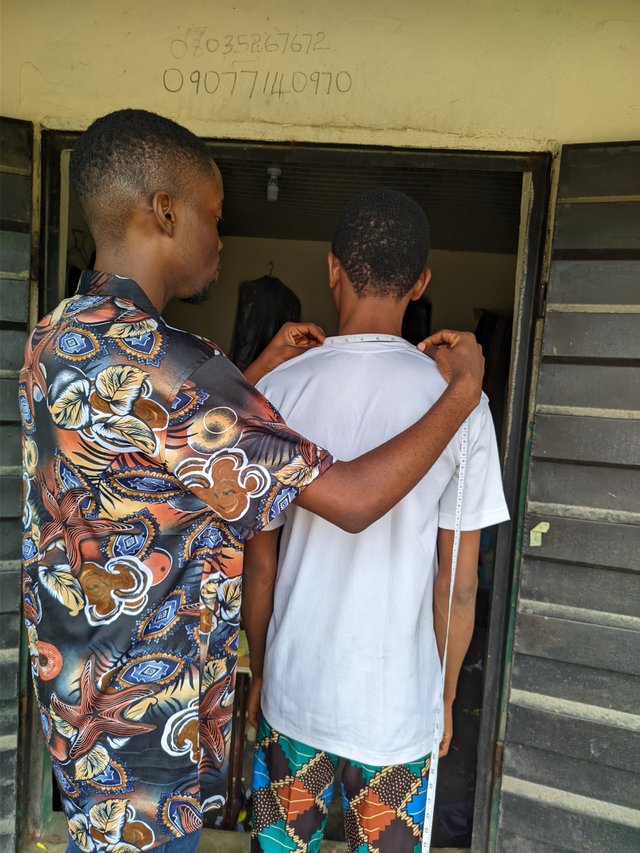 |
| Chest circumference | 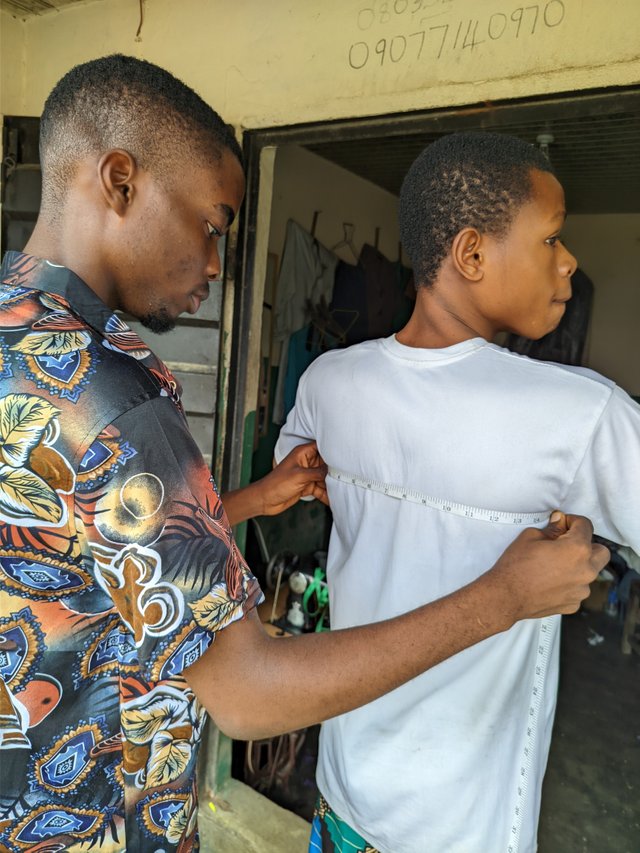 |
| Length and | 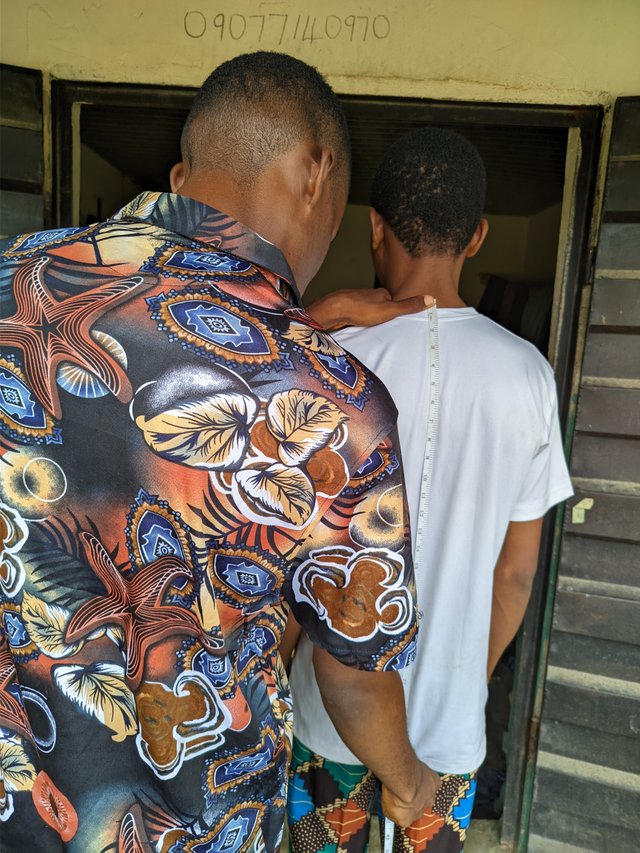 |
| Neck Contour |
These are the major measurements taken to produce a back base pattern for the shirt I want to sew. I made sure I focused on working with the given tutorials in my mentor's post. These are the steps I used in making this base pattern using cardboard paper. These are the materials I used for this practice.
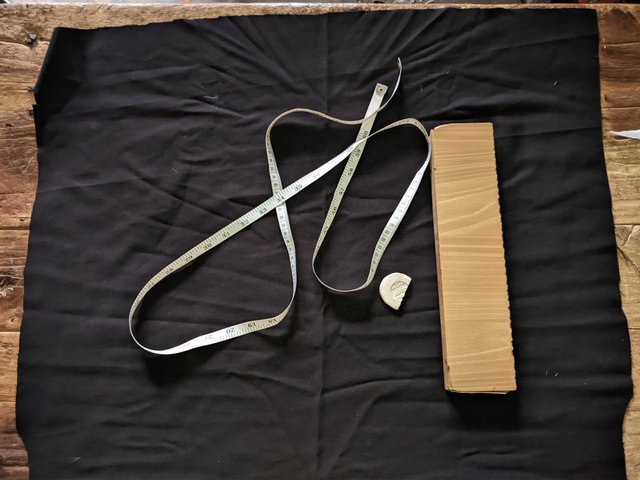
Measuring tape
Meter rule
Pencil and marker
Cardboard paper
Scissor
Fabric for Demo
Steps
- The first step I took was to make a box with my cardboard paper and then use my tape to measure 1/4 in cm of the chest circumference + 2cm for the length of the shirt which was measured. After making this chest circumference marking, I labelled the box A, B, C and D and also used numbers to represent the parts like neck contour and circumference, armhole, etc.
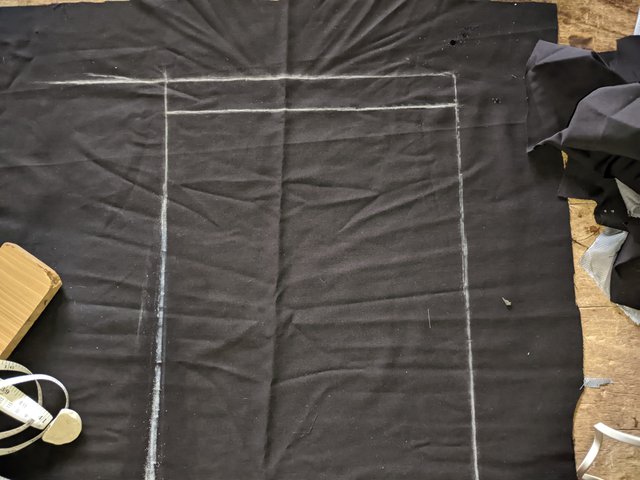 | 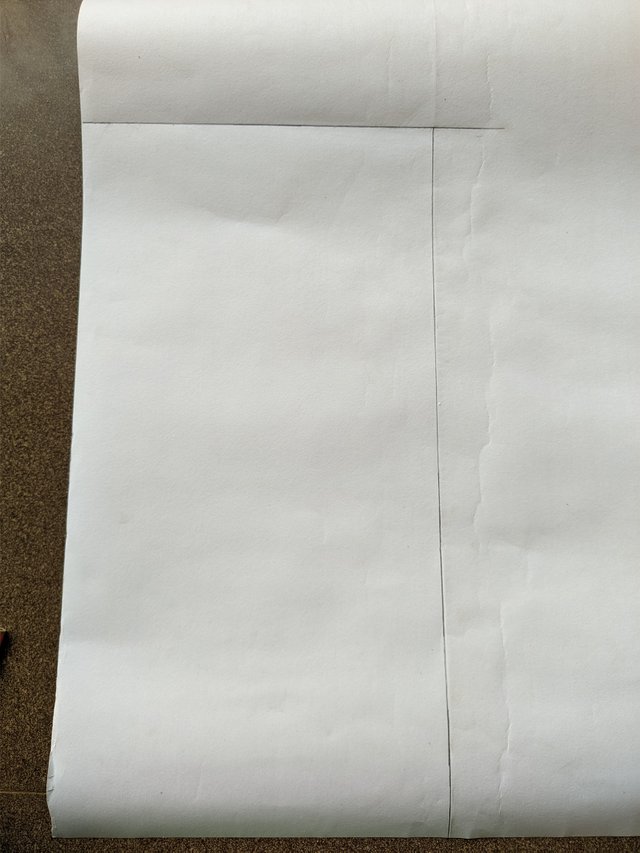 |
|---|
- I then measured 1/6 in cm of the neck circumference and made a joining to the base - 1 cm. This is indicated from point A to the vertical line of D. Still on that same point, I measured 1/4 of the chest circumference and joined it with my meter rule.
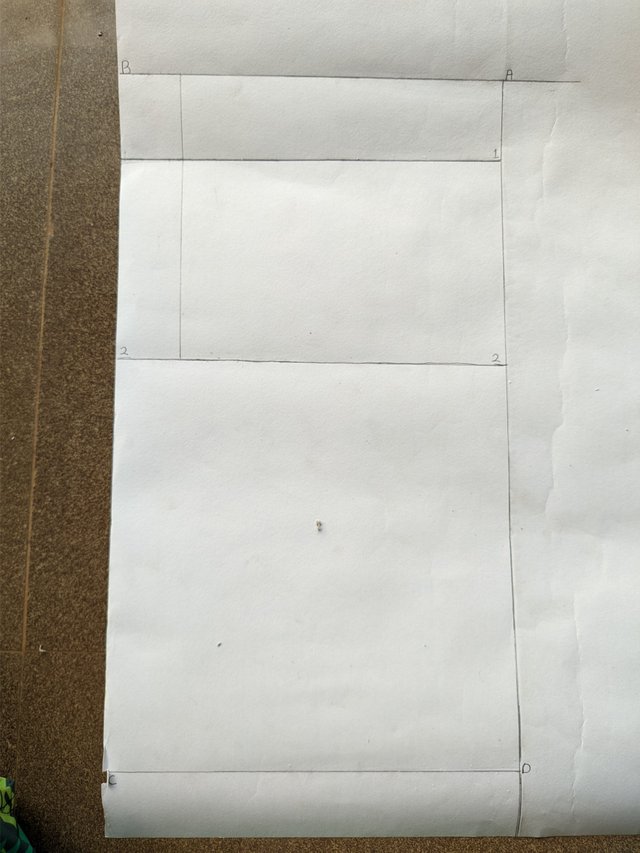 | 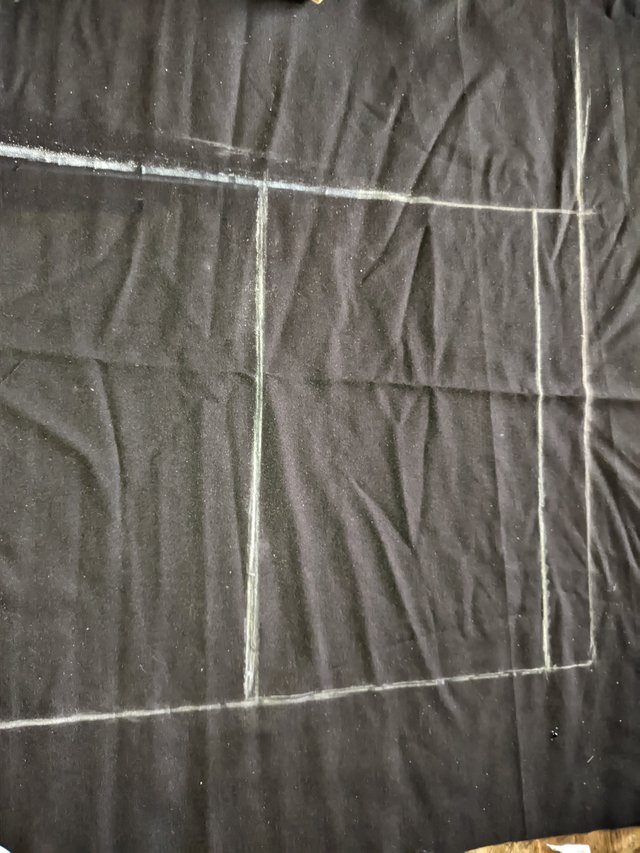 |
|---|
- From the up side, point A to B, I measured 1/6 part of the neck contour, as shown in the picture below, adding 2cm to the measurements. I then marked the points with numbers and made a curve of 1/6 of the neck contour + 2cm. I took measurements from point A to B, 1/2 of the back width, and then drew a parallel line to meet point B on line 2.
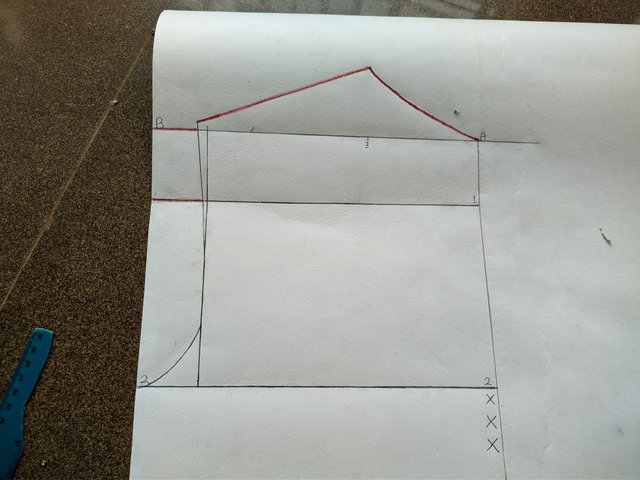 | 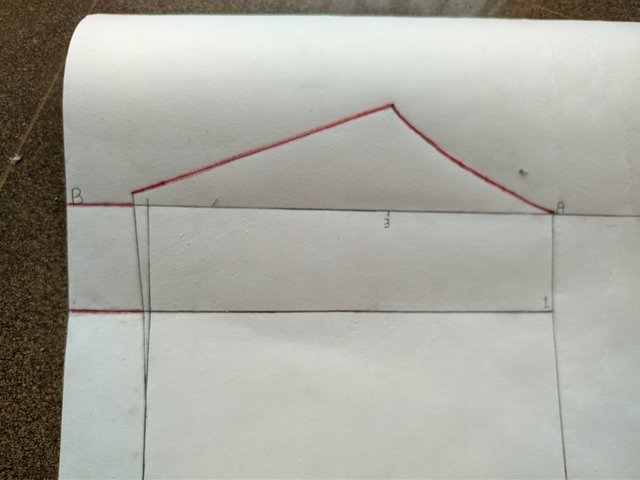 |
|---|---|
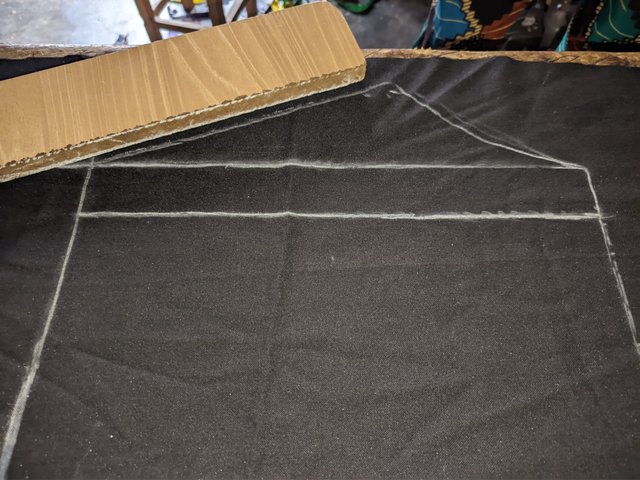 | 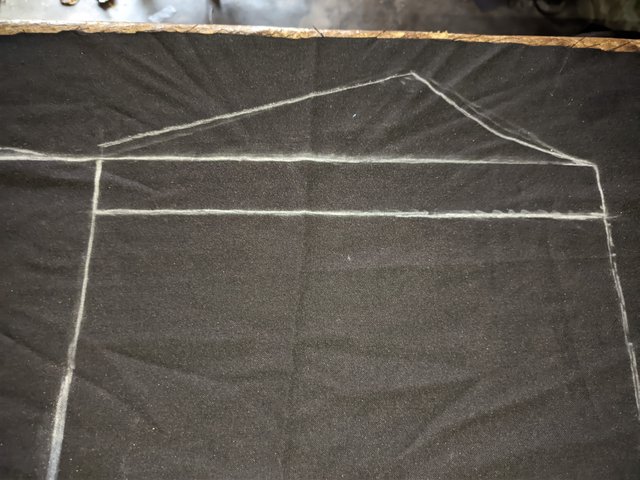 |
- From line 5, I measured a centimetre upwards and took out 1 cm of point 6 from the line of the box. With the patterns, 4 and 7 passed through line 6, which is the shoulder drop.
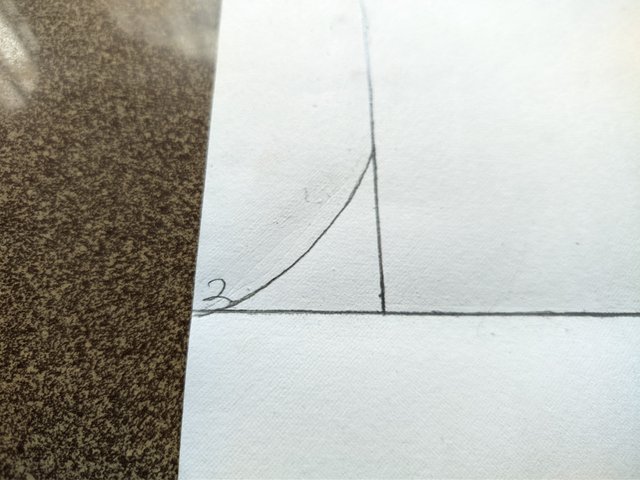 | 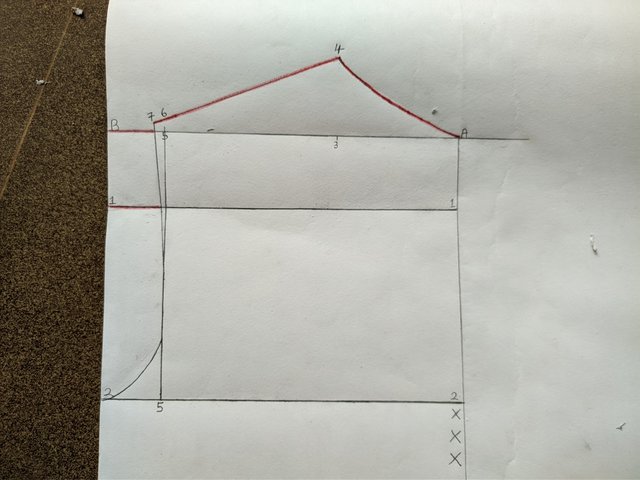 |
|---|
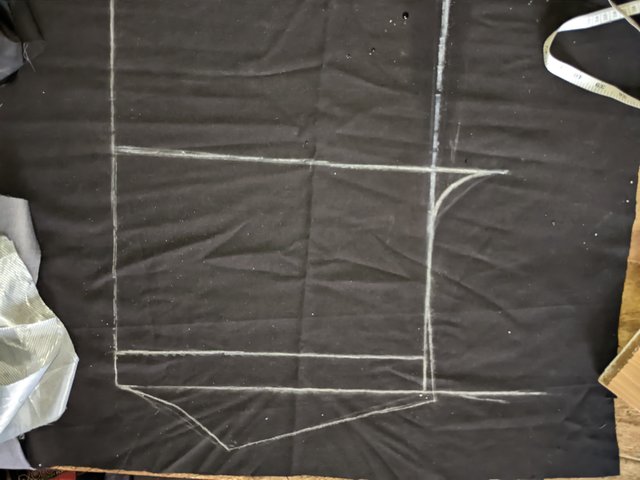
- Making line 2 and vertical line 7, I made the armhole curve and then found a space between line 2 and point C. This space was measured from 2 down in a slanted form to create point E with 1 cm. Joining line 2 to points C and F, I created a smooth angle F.
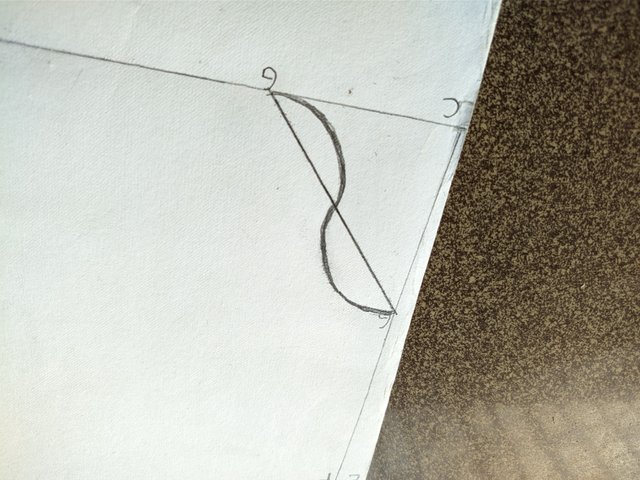 | 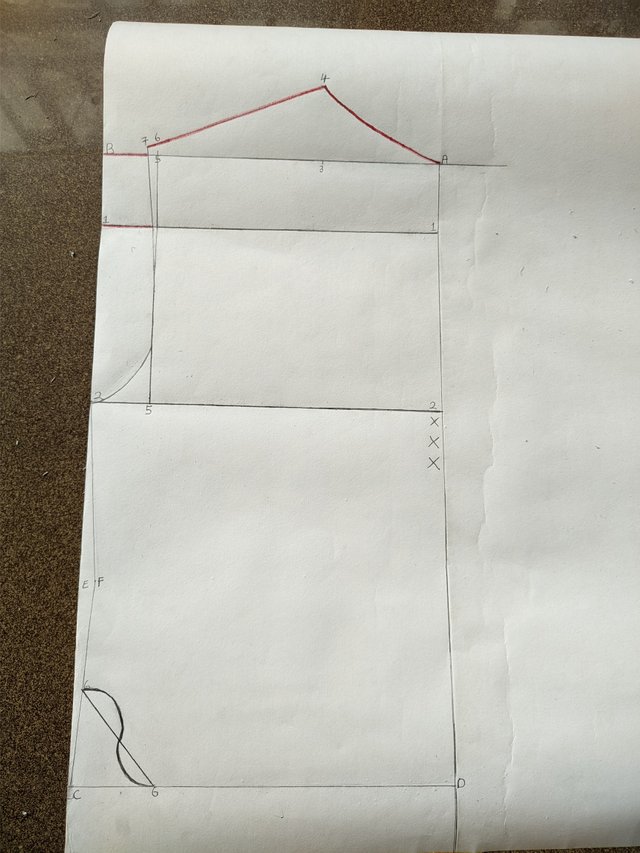 |
|---|---|
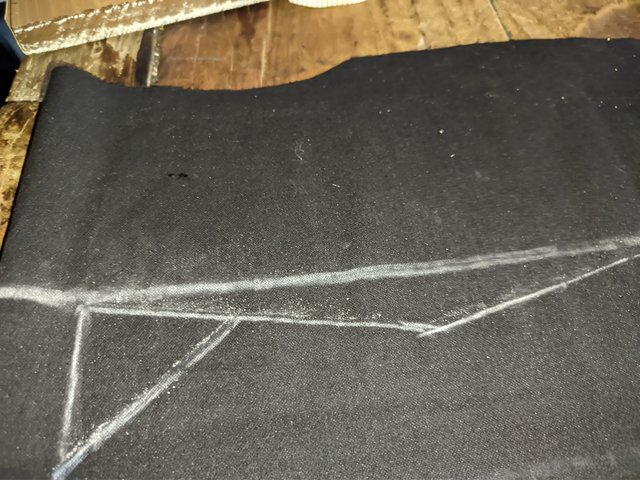 | 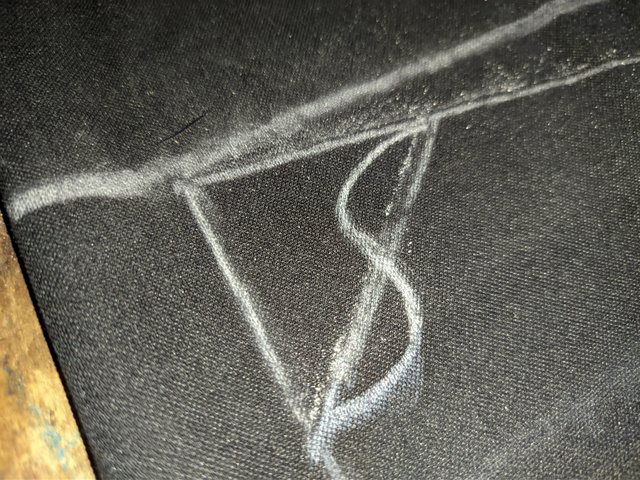 |
- I then had to transform the back base by making curves for the shirt to form point G. From C to D, I measured 8 cm on both the length and width and then joined it with a straight line. Mark the middle between these lines, and to make convex and concave curves, which would serve as the curves for the tip of the shirt. After doing this, I made an intersection line between lines 5 and 2 and measured 1.5 cm down to make curves that would separate the piece.
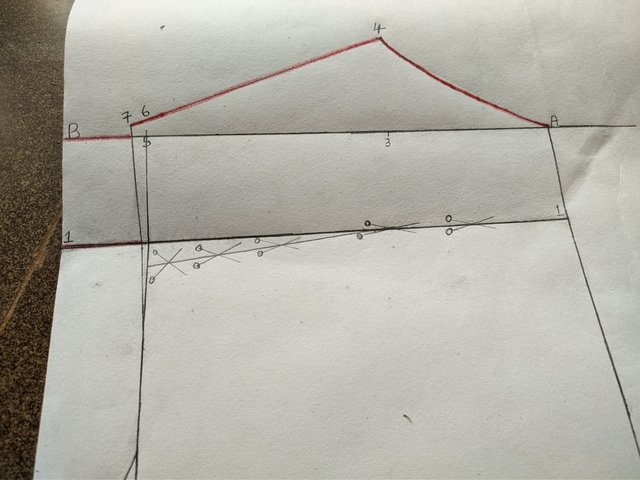 | 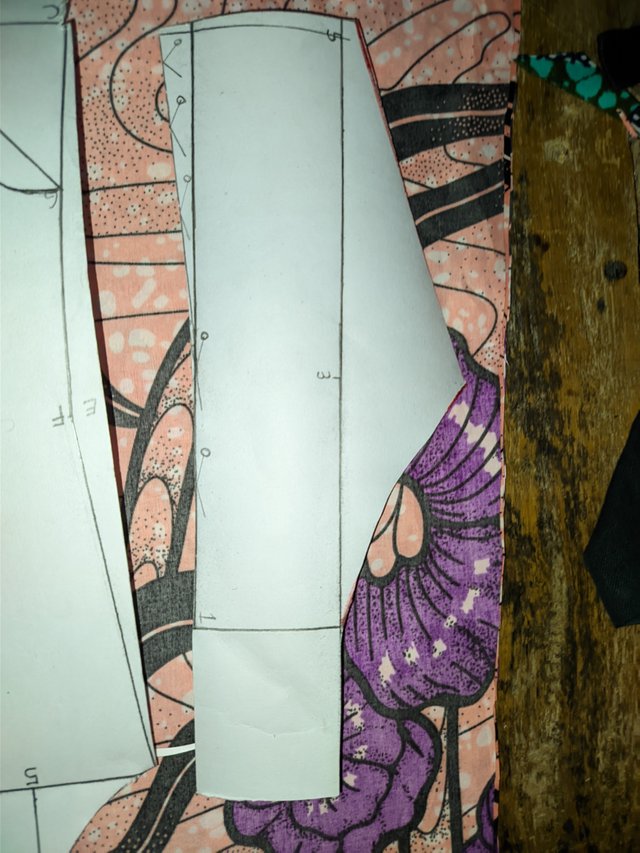 |
|---|---|
 |
- According to our coach:
On the piece of the shirt where the yoke is, from the double, measure 6 cm and square it. This way, it gives width and decorates the back. Although there are models that do not have this stud, then the pieces are only separated.
 |  |
|---|
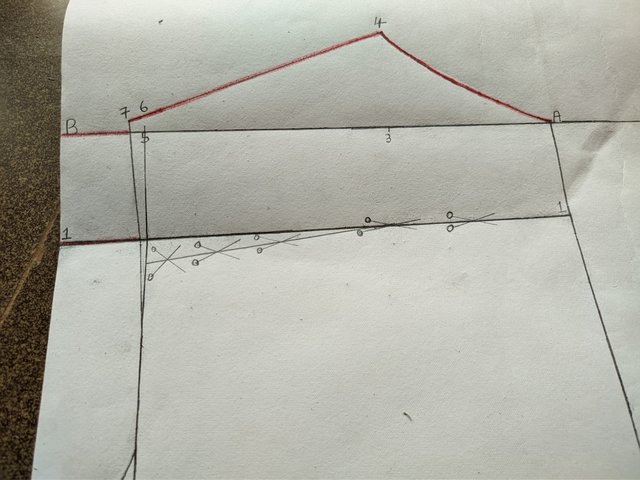
With this, I was able to create a back base pattern for men's shirts. I then carved the rough edges to bring it out plain. The below shows illustrations of my back base pattern while sewing, though I made it quite different.
 | 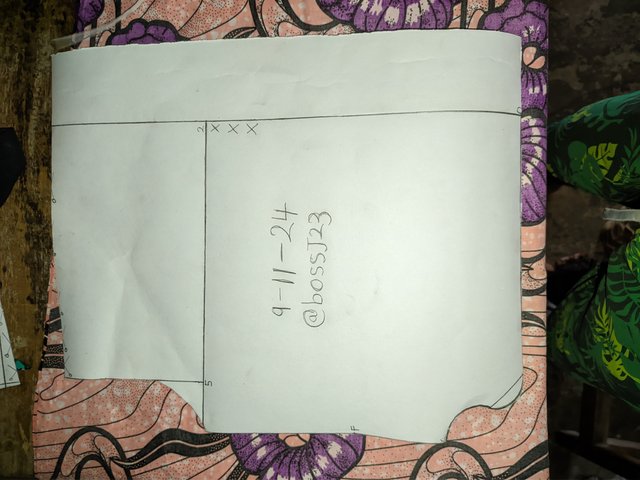 |
|---|---|
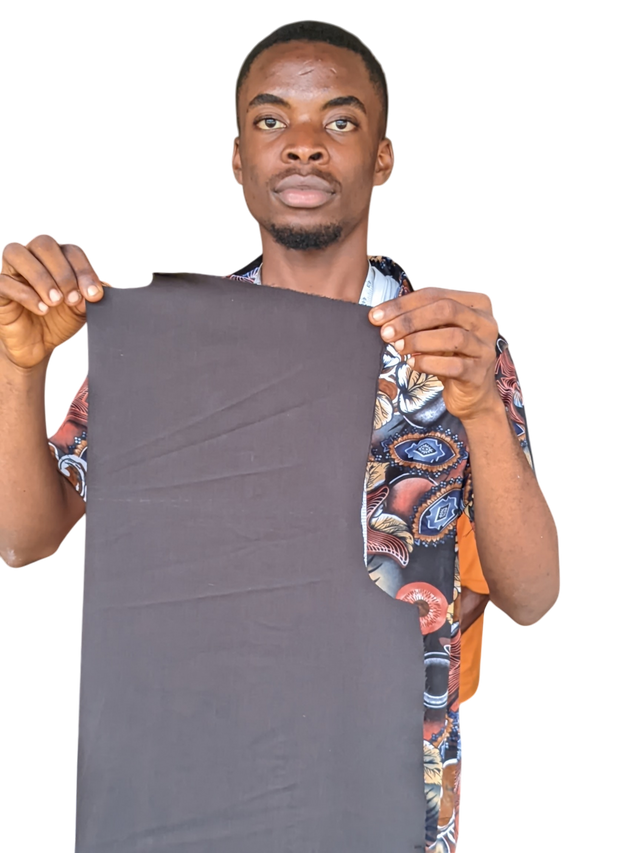 | 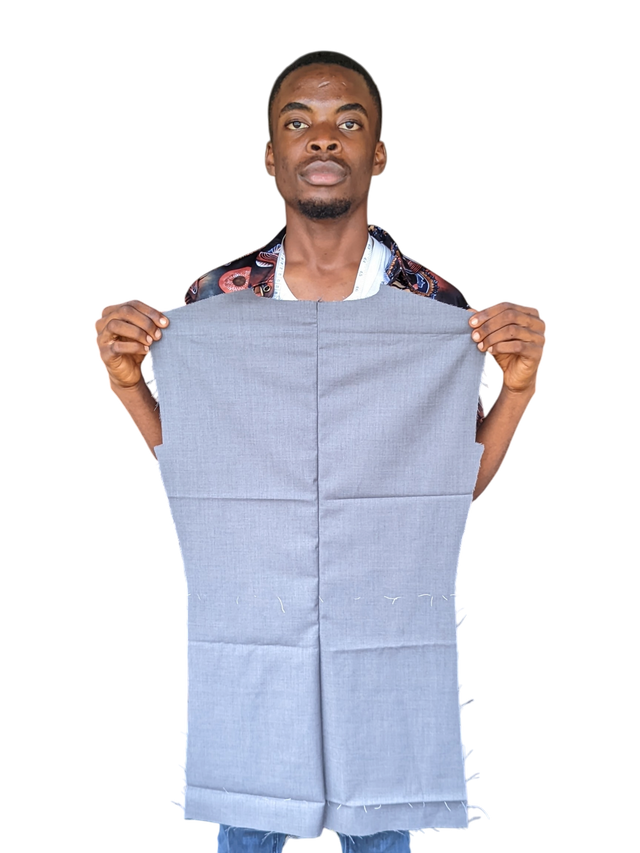 |
The day I made this pattern, I sewed two shirts for a customer. That's how I was able to create uniformity and design the back base of my shirt. The shoulder part (piece) or yoke is very important, as I usually use it to sew shirts for men. These are the steps I took to accomplish this. Here's a pictorial representation.
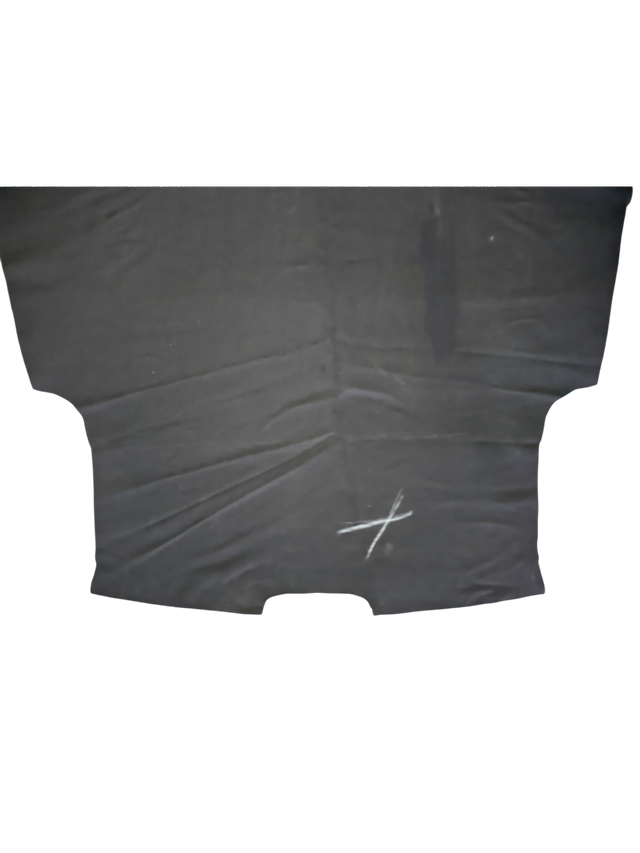 | 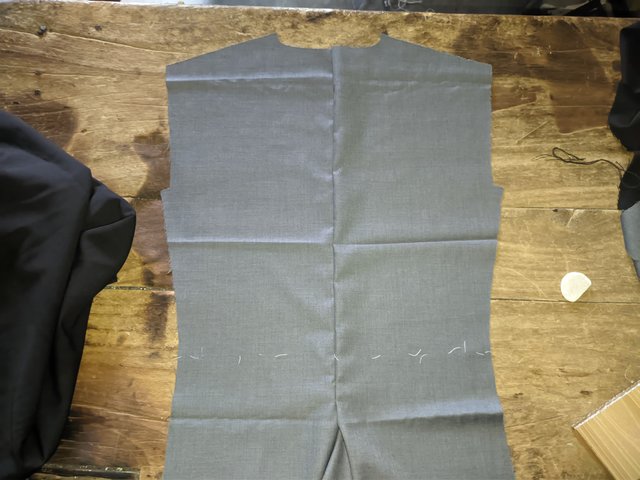 |
|---|---|
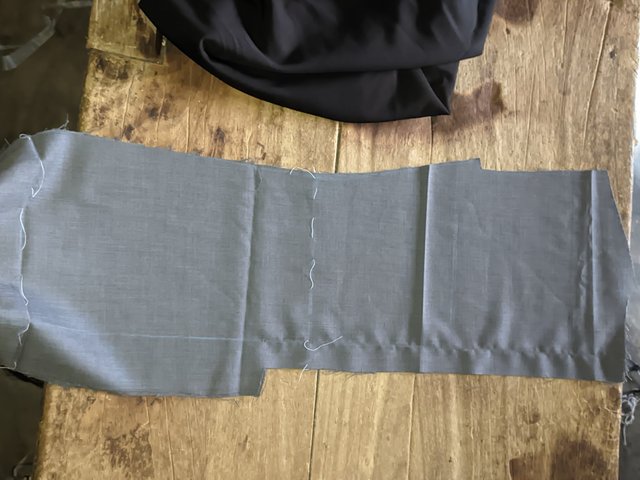 | 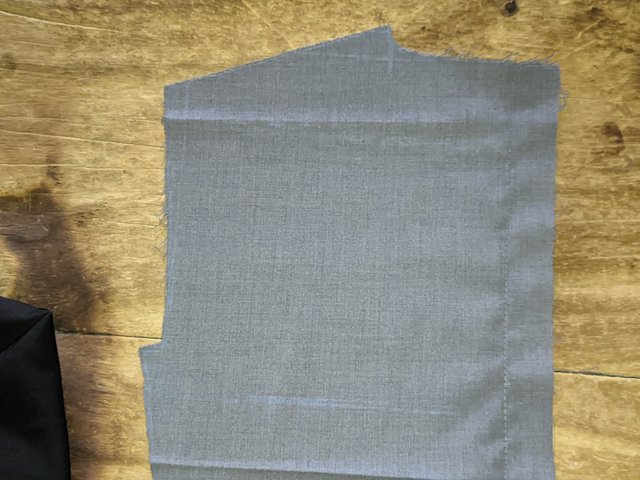 |
There are different types of collars for men's shirts and can be used by different people depending on their taste for things. In the fashion industry, there's this particular type of collar that's mostly used even in uniforms. It's the spread collar that has two ends in front and a round fitted back. We have others like standing collars, button-down collar, point collar, bishop collar, etc.
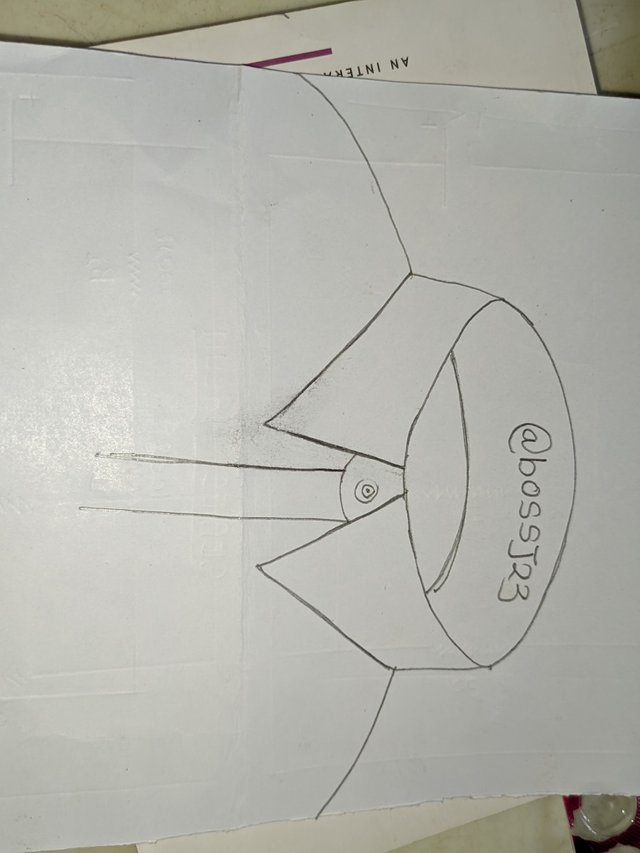
The model of shirt collar I want to sew is the straight point collar that is narrow, closer to the neck and has this classy business style. This is the model of collar I want to sew.
I invite @blessedlife, @artist1111 and @ahsansharif
Cc,
@lunasilver
Hola amigo @bossj23 te quedo muy bien elaborado el patron base de la parte trasera de la camisa de caballero.
Ya me imagino como te quedarian las camisas ya confeccionadas.
El cuello que diseñaste es muy hermoso, espero lo confecciones tambien.
Te deseo exitos en tu participacion.
Bendiciones!!!
Downvoting a post can decrease pending rewards and make it less visible. Common reasons:
Submit
Saludos, amigos. Disculpa la tardanza en responder.
Aunque quizás no es la forma en que estás acostumbrado a trabajar en tu oficio, veo que trazaste el patrón trasero tal como lo indica la instructora, gran trabajo.
Además cortaste las piezas en tela y podemos ver la parte trasera de la camisa que estabas haciendo.
Veo que hay un hilván, atravesando de lado a lado, supongo que es una referencia para armar las piezas.
Espero nos sigas mostrando tu trabajo porque creo que nos permitirá aprender sobre la costura de la camisa.
Saludos
Downvoting a post can decrease pending rewards and make it less visible. Common reasons:
Submit